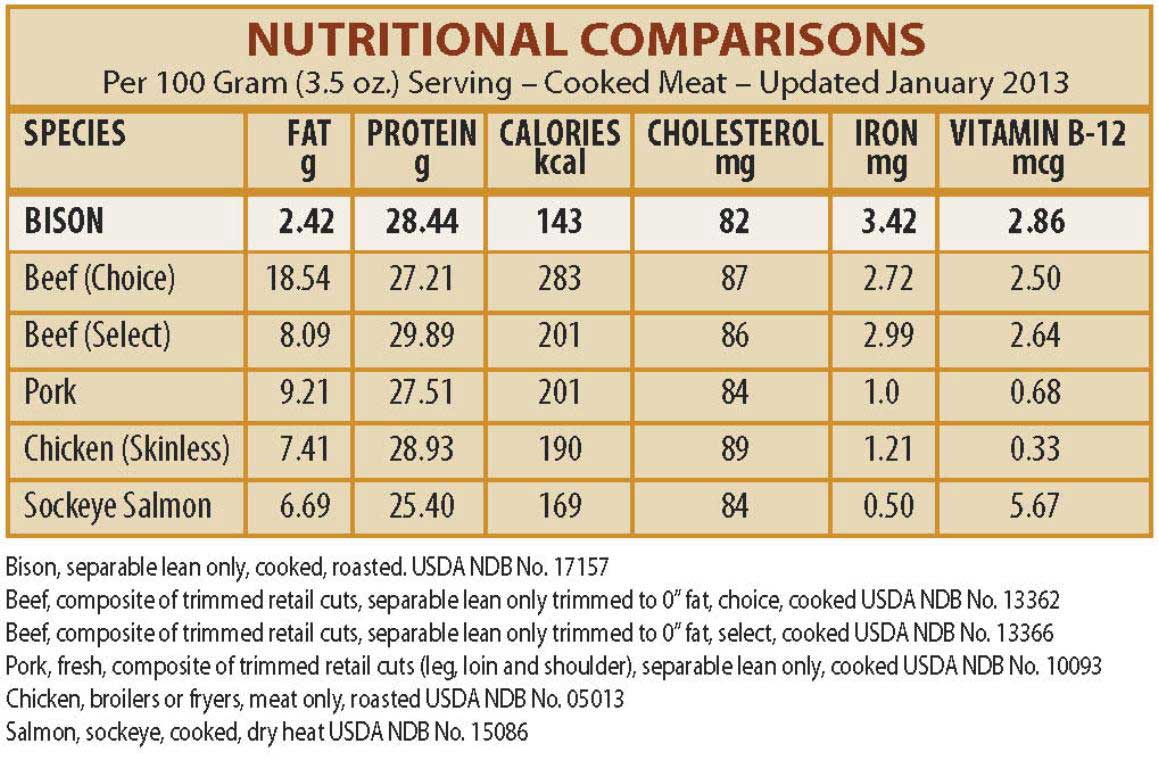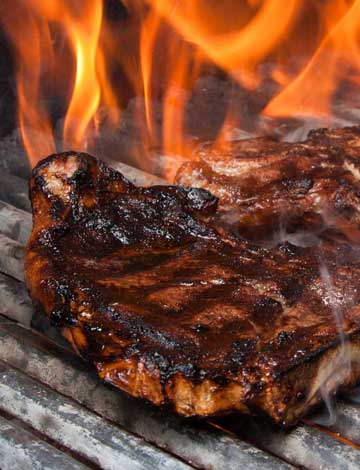Cooking Bison Meat
Bison is similar to beef and is cooked much the same way with a few exceptions. Bison meat tends to have a darker red color than beef, is very low in fat and cholesterol and high in protein, vitamins, and minerals. Compared to beef, Bison meat tends to have a fuller, richer (sweet) flavor; it is not "gamey" or wild tasting.
Because it is very lean (90-95%), the meat will cook much faster than beef. Because it cooks so much faster, caution needs to be taken not to overcook the meat. Overcooked bison will be like shoe leather and may attain a liver-like taste due to the high iron content. Whether a burger or a steak, bison meat should never be cooked beyond medium. Medium rare to rare is recommended. If you or your customers like well-done meat, it is best not to serve bison.
Since bison is lower in fat (which acts as an insulator) than other meats, it is easily overcooked. Large pieces of bison, such as roasts are generally cooked at a lower temperature than similar cuts of beef. Ground bison meat should be cooked to an internal temperature of no more than 160oF and the juices should be clear and not read. Roasts and steaks should be cooked to an internal temperature of 145oF (medium rare) or 160oF (medium) at the most. The oven should be set at around 275oF.
Some tips:
When broiling, move the broiler rack away from the heat about a notch lower than with beef. Expect a bison steak to cook one third (1/3) faster than beef. Bison steaks should be cooked rare to medium to maintain the moisture and flavor of the meat. It is never recommended to cook bison past medium.
If you normally cook roast beef at 325oF, turn your oven temperature down to around 275oF for bison. Plan on the roast being done in about the same time as a comparable piece of beef. A meat thermometer is recommended indicating internal temperature; again, rare to medium rare is recommended.
Ground bison is also very lean (90-95% lean). It will cook faster so care must to taken not to dry out the meat by overcooking. There is little shrinkage with bison – what you put in the pan raw will be close to the amount after you cook it. Medium rare to rare is best and recommended for juicier burger. A well done burger will be dry, have a liver-taste undertone, and the consistency of shoe leather. Do not add fat.
Grilling Steaks: Grill 4-6 inches above medium heat coals (325o) for the following times:
- 1" thick: Rare: 6-8 min; Medium: 8-10 min
- 1-1/2 thick: Rare: 8-10 min; Medium 10-12 min
- 2" thick - Rare: 10-12 min; Meeiu, 14-18 min
- Use tongs for turning to keep the juices in the steak.
Best when gilled to rare or medium (pink in center)
Do not overcook.
There are many websites that provide a variety of bison recipes to suit anyones preferences and taste. In general, anything good for beef is good for bison. For me, I prefer simply salt, pepper, and garlic as not to detract fropm the taste of the bison. Proper cooking is far more important than any recipe.
However, if you want something different, we suggest you try some of the recipies provided by the National Bison Association


